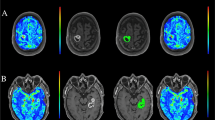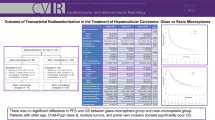Abstract
Five-aminolevulinic-acid (5-ALA) is known for its benefits in surgery of primary gliomas, but has only been cautiously used in recurrent gliomas dreading over-resection, insufficient or false-positive fluorescence in adjuvantly treated tumors. We evaluated intraoperative fluorescence based on tumor pathology, pretreatment as well as surgical and neurological outcome in patients with recurrent gliomas. Patients who underwent fluorescence-guided surgery for recurrent gliomas between 6/2010 and 2/2014 at our institution were retrospectively selected. Degree of surgical resection, neurological status, pathology results, intraoperative fluorescence and follow up status were analyzed. Patients who underwent repeat surgery without 5-ALA were selected as controls. 58 patients with high grade gliomas (°III and °IV) were included. 10 of 63 tumors (15.9 %) failed to fluoresce intraoperatively of which nine (90 %) had been adjuvantly treated prior to recurrence, as were 46 of the 53 fluorescing tumors (86.8 %). Non-fluorescing tumors were IDH mutated significantly more often (p = 0.005). 30 tumors (47.6 %) were located eloquently. 51 (80.9 %) patients showed no new neurologic deficits postoperatively. 13 patients (20.6 %) showed no signs of recurrence at their latest follow up. Eight patients were lost to follow up. Overall survival was significantly longer in the 5-ALA group (p = 0.025). Fluorescence-guided surgery in recurrent gliomas is safe and allows for a good surgical and neurological outcome in a difficult surgical environment, especially when used in combination with neuronavigation and intraoperative ultrasound to prevent over-resection. Adjuvant therapy did not significantly influence fluorescing properties.



Similar content being viewed by others

References
Martinez-Carrillo M, Tovar-Martin I, Zurita-Herrera M, Del Moral-Avila R, Guerrero-Tejada R, Saura-Rojas E, Osorio-Ceballos JL, Arrebola-Moreno JP, Exposito-Hernandez J (2014) Salvage radiosurgery for selected patients with recurrent malignant gliomas. Biomed Res Int 2014:657953. doi:10.1155/2014/657953
Wen PY, Kesari S (2008) Malignant gliomas in adults. N Engl J Med 359(5):492–507. doi:10.1056/NEJMra0708126
Hong B, Wiese B, Bremer M, Heissler HE, Heidenreich F, Krauss JK, Nakamura M (2013) Multiple microsurgical resections for repeated recurrence of glioblastoma multiforme. Am J Clin Oncol 36(3):261–268. doi:10.1097/COC.0b013e3182467bb1
Park JK, Hodges T, Arko L, Shen M, Dello Iacono D, McNabb A, Olsen Bailey N, Kreisl TN, Iwamoto FM, Sul J, Auh S, Park GE, Fine HA, Black PM (2010) Scale to predict survival after surgery for recurrent glioblastoma multiforme. J Clin Oncol 28(24):3838–3843. doi:10.1200/JCO.2010.30.0582
Barker FG 2nd, Chang SM, Gutin PH, Malec MK, McDermott MW, Prados MD, Wilson CB (1998) Survival and functional status after resection of recurrent glioblastoma multiforme. Neurosurgery 42(4):709–720 discussion 720–703
Dirks P, Bernstein M, Muller PJ, Tucker WS (1993) The value of reoperation for recurrent glioblastoma. Can J Surg 36(3):271–275
Harsh GR 4th, Levin VA, Gutin PH, Seager M, Silver P, Wilson CB (1987) Reoperation for recurrent glioblastoma and anaplastic astrocytoma. Neurosurgery 21(5):615–621
Hoover JM, Nwojo M, Puffer R, Mandrekar J, Meyer FB, Parney IF (2013) Surgical outcomes in recurrent glioma: clinical article. J Neurosurg 118(6):1224–1231. doi:10.3171/2013.2.JNS121731
Osoba D, Brada M, Prados MD, Yung WK (2000) Effect of disease burden on health-related quality of life in patients with malignant gliomas. Neuro-Oncology 2(4):221–228
Lacroix M, Abi-Said D, Fourney DR, Gokaslan ZL, Shi W, DeMonte F, Lang FF, McCutcheon IE, Hassenbusch SJ, Holland E, Hess K, Michael C, Miller D, Sawaya R (2001) A multivariate analysis of 416 patients with glioblastoma multiforme: prognosis, extent of resection, and survival. J Neurosurg 95(2):190–198. doi:10.3171/jns.2001.95.2.0190
Gulati S, Jakola AS, Nerland US, Weber C, Solheim O (2011) The risk of getting worse: surgically acquired deficits, perioperative complications, and functional outcomes after primary resection of glioblastoma. World Neurosurg 76(6):572–579. doi:10.1016/j.wneu.2011.06.014
Chambless LTC (2013) Innovations in the surgical treatment of gliomas. Innovative Neurosurg 1(3–4):137–143. doi:10.1515/ins-2013-0013
McGirt MJ, Mukherjee D, Chaichana KL, Than KD, Weingart JD, Quinones-Hinojosa A (2009) Association of surgically acquired motor and language deficits on overall survival after resection of glioblastoma multiforme. Neurosurgery 65(3):463–469. doi:10.1227/01.NEU.0000349763.42238.E9 discussion 469–470
Renovanz M, Hickmann AK, Henkel C, Nadji-Ohl M, Hopf NJ (2014) Navigated versus non-navigated intraoperative ultrasound: is there any impact on the extent of resection of high-grade gliomas? A retrospective clinical analysis. J Neurol Surg A Cent Eur Neurosur 75(3):224–230. doi:10.1055/s-0033-1356486
Ginat DT, Swearingen B, Curry W, Cahill D, Madsen J, Schaefer PW (2014) 3 Tesla intraoperative MRI for brain tumor surgery. J Magn Reson Imaging 39(6):1357–1365
Schulz C, Waldeck S, Mauer UM (2012) Intraoperative image guidance in neurosurgery: development, current indications, and future trends. Radiol Res Pract 2012:197364. doi:10.1155/2012/197364
Grunert P, Muller-Forell W, Darabi K, Reisch R, Busert C, Hopf N, Perneczky A (1998) Basic principles and clinical applications of neuronavigation and intraoperative computed tomography. Comput Aided Surg 3(4):166–173. doi:10.1002/(SICI)1097-0150(1998)3:4<166AID-IGS6>3.0.CO;2-E
Frey D, Schilt S, Strack V, Zdunczyk A, Rosler J, Niraula B, Vajkoczy P, Picht T (2014) Navigated transcranial magnetic stimulation improves the treatment outcome in patients with brain tumors in motor eloquent locations. Neuro-Oncol. doi:10.1093/neuonc/nou110
Rosler J, Niraula B, Strack V, Zdunczyk A, Schilt S, Savolainen P, Lioumis P, Makela J, Vajkoczy P, Frey D, Picht T (2014) Language mapping in healthy volunteers and brain tumor patients with a novel navigated TMS system: evidence of tumor-induced plasticity. Clin Neurophysiol 125(3):526–536. doi:10.1016/j.clinph.2013.08.015
Coburger J, Musahl C, Henkes H, Horvath-Rizea D, Bittl M, Weissbach C, Hopf N (2013) Comparison of navigated transcranial magnetic stimulation and functional magnetic resonance imaging for preoperative mapping in rolandic tumor surgery. Neurosurg Rev 36(1):65–75. doi:10.1007/s10143-012-0413-2 discussion 75–66
Krieg SM, Sabih J, Bulubasova L, Obermueller T, Negwer C, Janssen I, Shiban E, Meyer B, Ringel F (2014) Preoperative motor mapping by navigated transcranial magnetic brain stimulation improves outcome for motor eloquent lesions. Neuro-Oncol. doi:10.1093/neuonc/nou007
De Witt Hamer PC, Robles SG, Zwinderman AH, Duffau H, Berger MS (2012) Impact of intraoperative stimulation brain mapping on glioma surgery outcome: a meta-analysis. J Clin Oncol 30(20):2559–2565. doi:10.1200/JCO.2011.38.4818
Duffau H (2013) Brain mapping in tumors: intraoperative or extraoperative? Epilepsia 54(9):79–83. doi:10.1111/epi.12449
Stummer W, Nestler U, Stockhammer F, Krex D, Kern BC, Mehdorn HM, Vince GH, Pichlmeier U (2011) Favorable outcome in the elderly cohort treated by concomitant temozolomide radiochemotherapy in a multicentric phase II safety study of 5-ALA. J Neurooncol 103(2):361–370. doi:10.1007/s11060-010-0400-9
Stummer W, Novotny A, Stepp H, Goetz C, Bise K, Reulen HJ (2000) Fluorescence-guided resection of glioblastoma multiforme by using 5-aminolevulinic acid-induced porphyrins: a prospective study in 52 consecutive patients. J Neurosurg 93(6):1003–1013. doi:10.3171/jns.2000.93.6.1003
Stummer W, Reulen HJ, Meinel T, Pichlmeier U, Schumacher W, Tonn JC, Rohde V, Oppel F, Turowski B, Woiciechowsky C, Franz K, Pietsch T, Group AL-GS (2008) Extent of resection and survival in glioblastoma multiforme: identification of and adjustment for bias. Neurosurgery 62(3):564–576. doi:10.1227/01.neu.0000317304.31579.17 discussion 564–576
Stummer W, Pichlmeier U, Meinel T, Wiestler OD, Zanella F, Reulen HJ, Group AL-GS (2006) Fluorescence-guided surgery with 5-aminolevulinic acid for resection of malignant glioma: a randomised controlled multicentre phase III trial. Lancet Oncol 7(5):392–401. doi:10.1016/S1470-2045(06)70665-9
Nabavi A, Thurm H, Zountsas B, Pietsch T, Lanfermann H, Pichlmeier U, Mehdorn M, Group ALARGS (2009) Five-aminolevulinic acid for fluorescence-guided resection of recurrent malignant gliomas: a phase ii study. Neurosurgery 65(6):1070–1076. doi:10.1227/01.NEU.0000360128.03597.C7 discussion 1076-1077
Wachter D, Kallenberg K, Wrede A, Schulz-Schaeffer W, Behm T, Rohde V (2012) Fluorescence-guided operation in recurrent glioblastoma multiforme treated with bevacizumab-fluorescence of the noncontrast enhancing tumor tissue? J Neurol Surg A Cent Eur Neurosurg 73(6):401–406. doi:10.1055/s-0032-1304810
Tykocki T, Michalik R, Bonicki W, Nauman P (2012) Fluorescence-guided resection of primary and recurrent malignant gliomas with 5-aminolevulinic acid. Preliminary results. Neurol Neurochirur Pol 46(1):47–51
Vogelbaum MA, Jost S, Aghi MK, Heimberger AB, Sampson JH, Wen PY, Macdonald DR, Van den Bent MJ, Chang SM (2012) Application of novel response/progression measures for surgically delivered therapies for gliomas: Response Assessment in Neuro-Oncology (RANO) Working Group. Neurosurgery 70(1):234–243. doi:10.1227/NEU.0b013e318223f5a7
Sanai N (2012) Emerging operative strategies in neurosurgical oncology. Curr Opin Neurol 25(6):756–766. doi:10.1097/WCO.0b013e32835a2574
Aldave G, Tejada S, Pay E, Marigil M, Bejarano B, Idoate MA, Diez-Valle R (2013) Prognostic value of residual fluorescent tissue in glioblastoma patients after gross total resection in 5-aminolevulinic acid-guided surgery. Neurosurgery 72(6):915–920. doi:10.1227/NEU.0b013e31828c3974 discussion 920–911
Stummer W, Stocker S, Wagner S, Stepp H, Fritsch C, Goetz C, Goetz AE, Kiefmann R, Reulen HJ (1998) Intraoperative detection of malignant gliomas by 5-aminolevulinic acid-induced porphyrin fluorescence. Neurosurgery 42(3):518–525 discussion 525–516
Duffner F, Ritz R, Freudenstein D, Weller M, Dietz K, Wessels J (2005) Specific intensity imaging for glioblastoma and neural cell cultures with 5-aminolevulinic acid-derived protoporphyrin IX. J Neurooncol 71(2):107–111. doi:10.1007/s11060-004-9603-2
Utsuki S, Oka H, Sato S, Shimizu S, Suzuki S, Tanizaki Y, Kondo K, Miyajima Y, Fujii K (2007) Histological examination of false positive tissue resection using 5-aminolevulinic acid-induced fluorescence guidance. Neurol Med Chir 47(5):210–213 discussion 213–214
Panciani PP, Fontanella M, Garbossa D, Agnoletti A, Ducati A, Lanotte M (2012) 5-aminolevulinic acid and neuronavigation in high-grade glioma surgery: results of a combined approach. Neurocirugia 23(1):23–28. doi:10.1016/j.neucir.2012.04.003
Health USNIo (2010) APG101 in Glioblastoma. http://clinicaltrials.gov/ct2/show/results/NCT01071837
Wick W, Weller M, Weiler M, Batchelor T, Yung AW, Platten M (2011) Pathway inhibition: emerging molecular targets for treating glioblastoma. Neuro-Oncol 13(6):566–579. doi:10.1093/neuonc/nor039
Tejada-Solis S, Aldave-Orzaiz G, Pay-Valverde E, Marigil-Sanchez M, Idoate-Gastearena MA, Diez-Valle R (2012) Prognostic value of ventricular wall fluorescence during 5-aminolevulinic-guided surgery for glioblastoma. Acta Neurochir 154(11):1997–2002. doi:10.1007/s00701-012-1475-1 discussion 2002
Walzlein JH, Synowitz M, Engels B, Markovic DS, Gabrusiewicz K, Nikolaev E, Yoshikawa K, Kaminska B, Kempermann G, Uckert W, Kaczmarek L, Kettenmann H, Glass R (2008) The antitumorigenic response of neural precursors depends on subventricular proliferation and age. Stem Cells 26(11):2945–2954. doi:10.1634/stemcells.2008-0307
Stummer W, Tonn JC, Goetz C, Ullrich W, Stepp H, Bink A, Pietsch T, Pichlmeier U (2014) 5-Aminolevulinic acid-derived tumor fluorescence: the diagnostic accuracy of visible fluorescence qualities as corroborated by spectrometry and histology and postoperative imaging. Neurosurgery 74(3):310–319. doi:10.1227/NEU.0000000000000267 discussion 319–320
Coburger J, Engelke J, Scheuerle A, Thal DR, Hlavac M, Wirtz CR, Konig R (2014) Tumor detection with 5-aminolevulinic acid fluorescence and Gd-DTPA-enhanced intraoperative MRI at the border of contrast-enhancing lesions: a prospective study based on histopathological assessment. Neurosurg Focus 36(2):E3. doi:10.3171/2013.11.FOCUS13463
Stummer W, Stepp H, Moller G, Ehrhardt A, Leonhard M, Reulen HJ (1998) Technical principles for protoporphyrin-IX-fluorescence guided microsurgical resection of malignant glioma tissue. Acta Neurochir (Wien) 140(10):995–1000
Tonn JC, Stummer W (2008) Fluorescence-guided resection of malignant gliomas using 5-aminolevulinic acid: practical use, risks, and pitfalls. Clin Neurosurg 55:20–26
Stummer W (2013) The Fear of 5-ALA—Is it warranted? World Neurosurg. doi:10.1016/j.wneu.2013.09.048
Chang SM, Parney IF, McDermott M, Barker FG 2nd, Schmidt MH, Huang W, Laws ER Jr, Lillehei KO, Bernstein M, Brem H, Sloan AE, Berger M, Glioma Outcomes Investigators (2003) Perioperative complications and neurological outcomes of first and second craniotomies among patients enrolled in the Glioma Outcome Project. J Neurosurg 98(6):1175–1181. doi:10.3171/jns.2003.98.6.1175
Feigl GC, Ritz R, Moraes M, Klein J, Ramina K, Gharabaghi A, Krischek B, Danz S, Bornemann A, Liebsch M, Tatagiba MS (2010) Resection of malignant brain tumors in eloquent cortical areas: a new multimodal approach combining 5-aminolevulinic acid and intraoperative monitoring. J Neurosurg 113(2):352–357. doi:10.3171/2009.10.JNS09447
Della Puppa A, De Pellegrin S, d’Avella E, Gioffre G, Rossetto M, Gerardi A, Lombardi G, Manara R, Munari M, Saladini M, Scienza R (2013) 5-aminolevulinic acid (5-ALA) fluorescence guided surgery of high-grade gliomas in eloquent areas assisted by functional mapping. Our experience and review of the literature. Acta Neurochirur 155(6):965–972. doi:10.1007/s00701-013-1660-x discussion 972
Giovagnoli AR, Silvani A, Colombo E, Boiardi A (2005) Facets and determinants of quality of life in patients with recurrent high grade glioma. J Neurol Neurosurg Psychiatry 76(4):562–568. doi:10.1136/jnnp.2004.036186
Conflict of interest
The authors declare no conflict of interest.
Author information
Authors and Affiliations
Corresponding author
Rights and permissions
About this article
Cite this article
Hickmann, AK., Nadji-Ohl, M. & Hopf, N.J. Feasibility of fluorescence-guided resection of recurrent gliomas using five-aminolevulinic acid: retrospective analysis of surgical and neurological outcome in 58 patients. J Neurooncol 122, 151–160 (2015). https://doi.org/10.1007/s11060-014-1694-9
Received:
Accepted:
Published:
Issue Date:
DOI: https://doi.org/10.1007/s11060-014-1694-9



